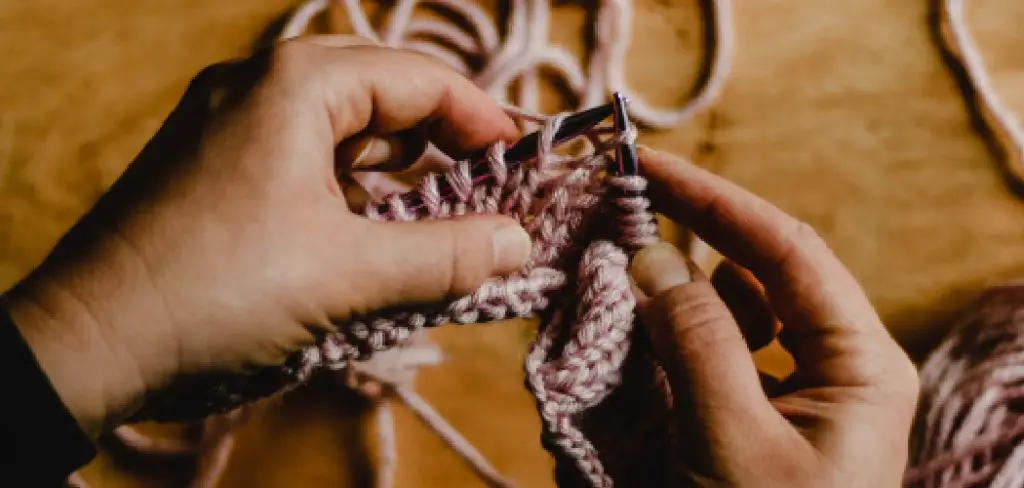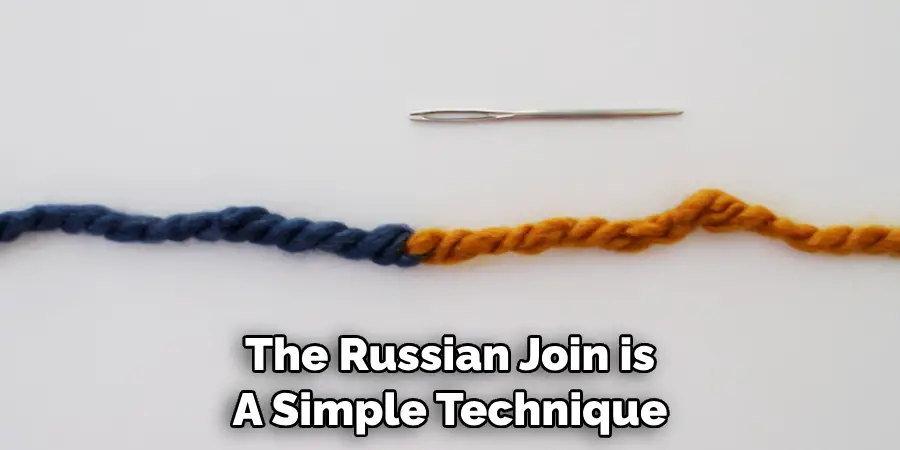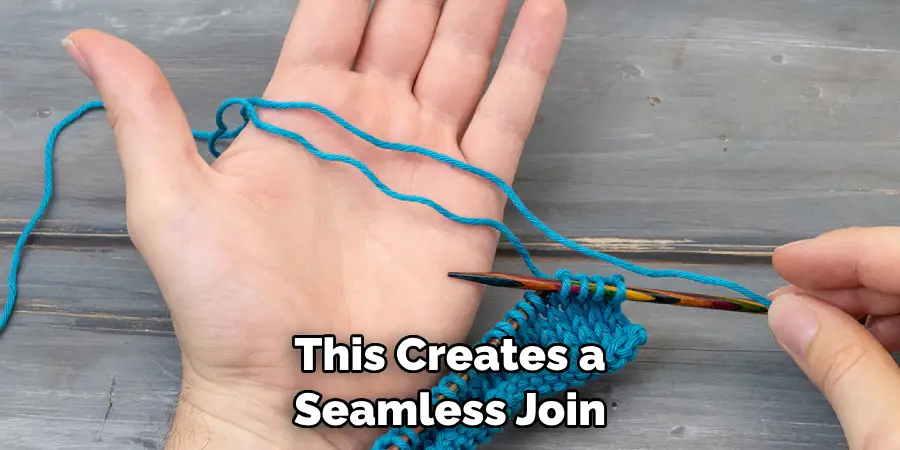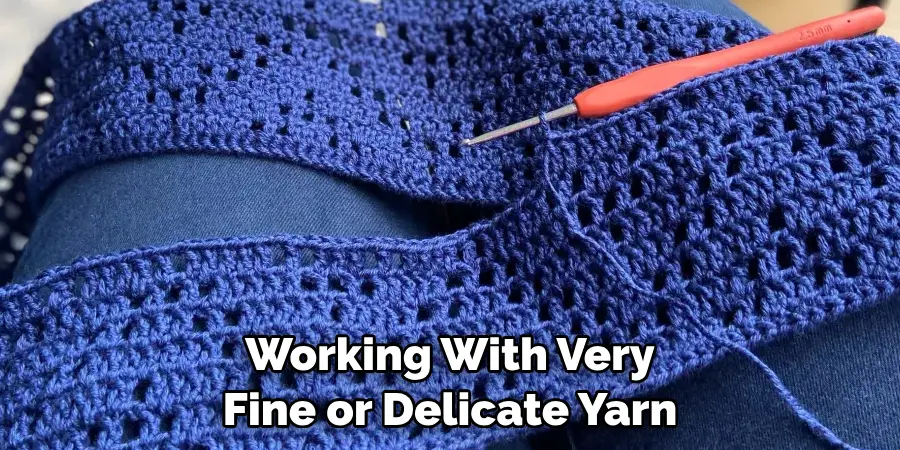Are you a passionate knitter looking for ways to get creative with your projects? Want to join two ends of yarn together without having to use the typical knotting technique? Look no further!
In this blog post, we’ll be exploring how to join yarn in knitting without a knot. The best part is that it requires little effort and doesn’t result in an unsightly knot. Join us as we dive into all the tips and tricks you need to realize your dream project today!

9 Best Ways on How to Join Yarn in Knitting Without a Knot
1. The Spit Splice Method:
This method is ideal for joining wool or animal-based yarn. To achieve this, simply dampen the two ends of yarn you want to join with your saliva and rub them together vigorously until they form a bond. This method works because wool fibers have natural barbs that can fuse together when moistened and agitated.
2. The Russian Join:
The Russian join is a simple technique that involves weaving the two ends of yarn together by splitting them into strands and twisting them around each other. This method works best for thick or chunky yarns and results in a nearly invisible join. This method also avoids adding bulk to your project. If you’re a visual learner, there are many tutorials on YouTube that can guide you through the process.
3. The Magic Knot:

The magic knot is another great method for joining yarn without a visible knot. To achieve this, tie two loose knots with the ends of your yarn and then pull them tightly together in opposite directions until they form a secure join. This method works best with slippery yarns like silk or nylon blends. This is one of the fastest methods on this list, so it’s perfect for those who are short on time.
4. The Felted Join:
If you’re working with animal-based yarn such as wool or alpaca, using the felted join technique is an excellent option. Simply place the two ends of yarn next to each other and use a felting needle or even a regular sewing needle to fuse the fibers together. This method creates a strong join and is also invisible once felted.
5. The Braided Join:
The braided join technique involves splitting both ends of yarn into strands, braiding them separately, and then twisting them around each other to create a secure bond. This method works best with thin yarns and results in a seamless join that won’t add bulk to your project. If you’re working with multiple colors, this method can also create a beautiful speckled effect.
6. The Overlap Join:
The overlap join is one of the easiest methods to use for any type of yarn. Simply overlap the two ends of yarn by about an inch and then knit or crochet them together as you normally would. This method creates a secure join that won’t come undone and is also very easy to undo if you make a mistake.

7. The Weaving Method:
The weaving method involves threading the two ends of yarn onto a tapestry needle and weaving them together along the seam of your project. This method is great for joining bulky or slippery yarns and creates an invisible join that won’t add extra bulk. It’s also very secure and won’t come undone. This is another method with many helpful tutorials available online.
8. The Crochet Join:
If you’re a crocheter, the crochet join technique is perfect for joining yarn without knots. Simply create a slip knot on your hook and then pull both ends of the yarn through the loop. This creates a secure join that can be hidden within your stitches. If you’re not familiar with crochet, this method may take a bit of practice.
9. The Invisible Join:
The invisible join is a technique that works best for joining yarn in the round or when working in rows. To achieve this, cut your yarn and leave a long tail. Then, thread the tail onto a tapestry needle and weave it through an adjoining stitch on the opposite side to create a seamless join. This method works well for both thin and thick yarns.
Following these simple and creative methods, you’ll be able to join yarn in knitting without a knot like a pro! Experiment with different techniques and find what works best for your specific project. Say goodbye to unsightly knots and hello to seamless joins that will elevate the overall look of your knitting projects. Happy crafting!
Additional Tips and Tricks to Join Yarn in Knitting Without a Knot
1. If you’re using a plied yarn, split the plies and overlap them when joining. This will create a smoother join without adding bulk.
2. If splitting the plies is not an option, try felting the ends of the old and new yarn together with a felting needle or rubbing them between your hands until they stick together.
3. Another option is to use a Russian join, where you interweave the old and new yarn together. This creates a seamless join without any noticeable bulk. This method works best with more slippery yarns.

4. For a less visible join, try the invisible or mattress stitch. This is typically used for seaming knitted pieces together, but it can also be used for joining new yarn in knitting. Simply thread one end of the old yarn into a tapestry needle and weave it through several stitches on the back of your work. Repeat with the new yarn and then weave both ends in to secure them.
5. If you’re using a multicolored or variegated yarn, try joining at the beginning of a row to hide any color changes.
6. In some cases, it may be necessary to use a simple knot when joining very slippery or textured yarns. However, avoid this whenever possible as knots can create bulk and make your finished piece look less polished.
7. When joining yarn for colorwork, consider using the spit splice method. This involves wetting the ends of both yarns and rubbing them together until they felt together.
8. If you’re joining a new skein of yarn in the middle of a row, try to do so at the beginning or end of a stitch. This will make it easier to weave in the ends later.
9. When joining yarn in garter stitch, alternate between knitting and purling for a few stitches before continuing with your regular pattern to create an invisible join.
10. Remember to weave in your ends securely after joining yarn to avoid any unraveling or loose stitches.
By following these additional tips and tricks, you can join yarn in your knitting projects without the need for a knot. Experiment with different methods to find what works best for your particular yarn and project. Don’t be afraid to try new techniques and have fun with your knitting! So keep on creating beautiful knitted pieces without any pesky knots holding you back. Happy knitting!
Frequently Asked Questions
Why Should I Avoid Knots When Joining Yarn?
Knots can create bulk and unevenness in your knitting project. This not only alters the appearance of your finished piece, but also makes it difficult to achieve a smooth and consistent tension when knitting. Furthermore, knots can come undone with wear or washing, causing your hard work to unravel.
How Can I Join Yarn Without a Knot?
There are several methods for joining yarn without a knot. One popular method is the Russian Join, where you split the ends of both old and new yarn and twist them together to create a seamless join. Another method is the Spit Splice, where you moisten the ends of your old and new yarn and rub them together to fuse them into one continuous strand.
Are There Any Other Benefits to Joining Yarn Without a Knot?
Yes, joining yarn without a knot allows for a smoother transition in color changes. Knots can create sharp and abrupt changes, whereas seamless joins blend the colors seamlessly. This is especially important when working with variegated or self-striping yarns.
Can I Join Different Types of Yarn Without a Knot?
It is possible to join different types of yarn without a knot, but it may require some experimentation to find the best method. The Russian Join and Spit Splice methods mentioned above can work well for joining different weights or fibers of yarn. However, if you’re working with drastically different types of yarn, such as wool and silk, it’s best to avoid joining them together and instead weave in the ends discreetly.
Do I Need Special Tools or Equipment to Join Yarn Without a Knot?
No, you can join yarn without a knot using just your hands and a pair of scissors. However, some knitters may find it helpful to have a tapestry needle on hand for weaving in the ends after joining.
Additionally, if you’re working with very fine or delicate yarn, you may want to use a smaller needle to make the join less noticeable. It’s all about personal preference and finding what works best for your project. So don’t be afraid to experiment!

Conclusion
All in all now you know how to join yarn in knitting without a knot. By avoiding knots, you can create a smoother and more polished finished piece while also ensuring its durability. With various methods available, you can choose the one that works best for your project and personal preference. So go forth and knit without knots! Happy crafting!

